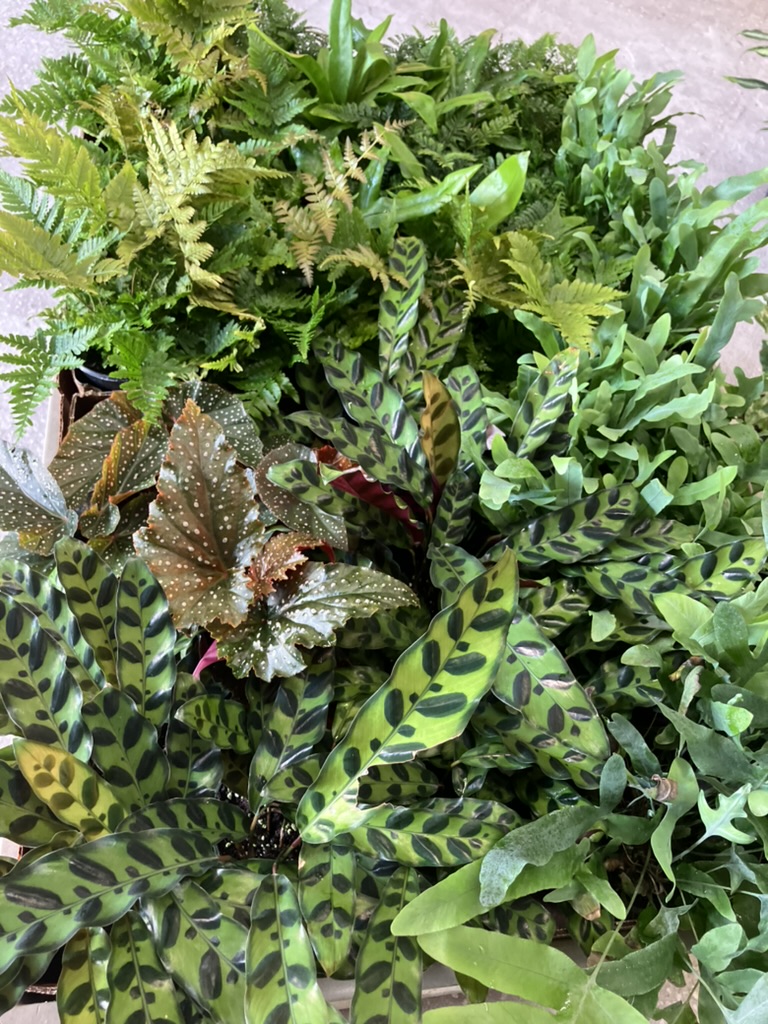
How to care for your new plant !
How to care for your Blue star fern
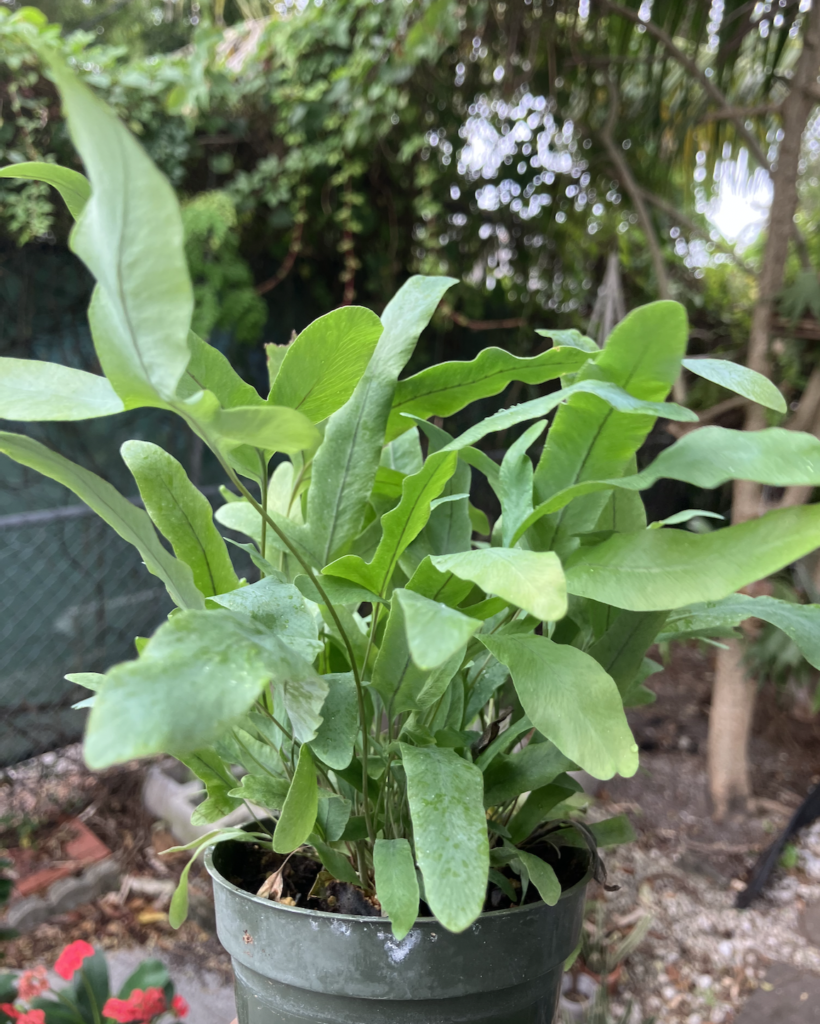
- This is a non toxic (pets and humans) fern.This fern is native to tropical regions across North and South America where it grows naturally as an epiphyte. It spreads by creeping rhizomes which help it to grow up trees and vines in the forest understory where it can get up to three feet tall and wide. Indoors, this plant can be happily grown in potting containers with a well-draining mix, although it will rarely grow larger than two feet tall.
- Choose a spot that receives medium to bright indirect light. East or West Facing window
- Keep it evenly moist, with consistent watering but be cautious of overwatering. Overwatering the soil will be soggy. The plant likes soil to be lightly wet and a consistent damp. Try not to let it dry out.
- Choose a warm location with average to high humidity.
How to care for your Rabbit’s foot fern
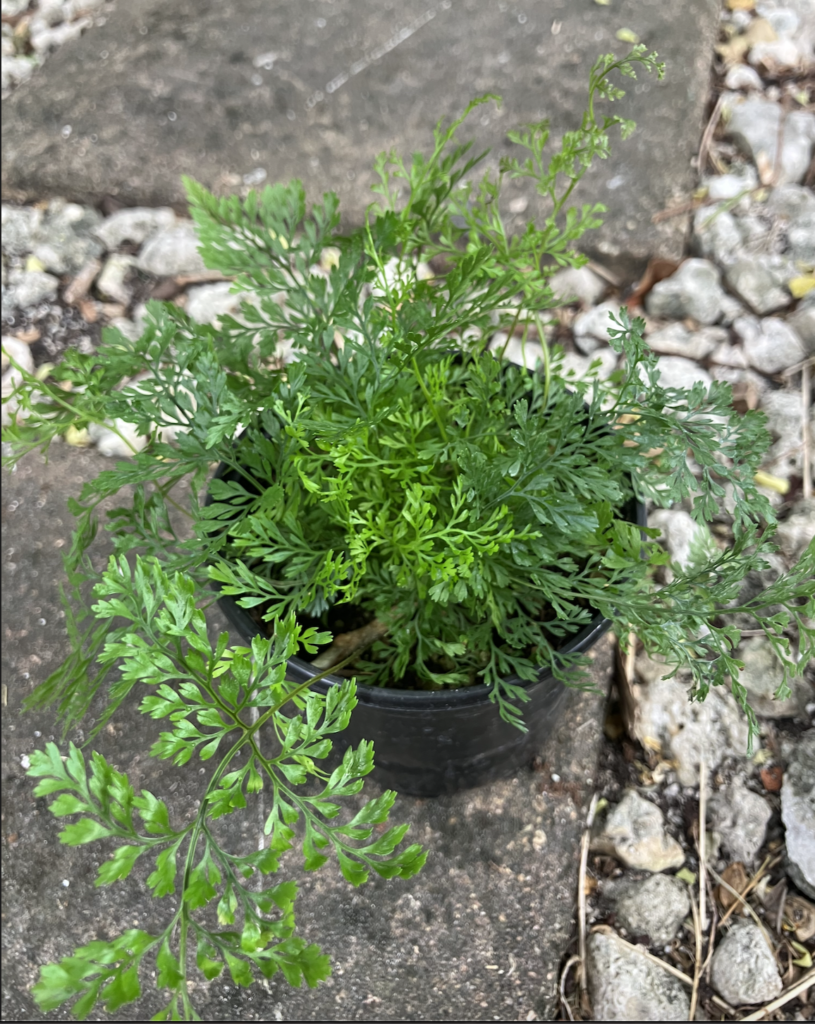
- This is a non toxic(for pets and humans) plant that likes to be misted and kept in low light with temps indoor around 65 – 85 deg.
- A space that receives low indirect sunlight will make this plant very happy!
- Water moderately, enough to make the soil moist. Allow the soil in the container to dry out slightly between waterings. In my Florida apartment which stays around 78-80 deg – I water twice a week. Inserting the entire plant under the water soaking for several minutes. I recently decided to hang mine in a pot in an east facing window and it seems to be very happy. When the soil is dry or almost dry to the touch, it’s time to water. Over-watering will cause the leaves to yellow. Too much sun can turn the leaves brown/yellowish.
- The fuzzy feet will grow outside the pot. The rabbit’s foot fern is composed of dense clusters of verdant fronds. They are epiphytic and don’t derive nutrients from the soil, but instead grow between rock crevices and on trees, pulling nutrients from the water and air around them. Their root system consists of fuzzy rhizomes that grow at their base. It is OK to plant in soil as a houseplant, the rhizomes will grow outside of the pot and receive nutrients and moisture from the pot, air and anything surrounding the plant.
How to care for your Rattlesnake Plant
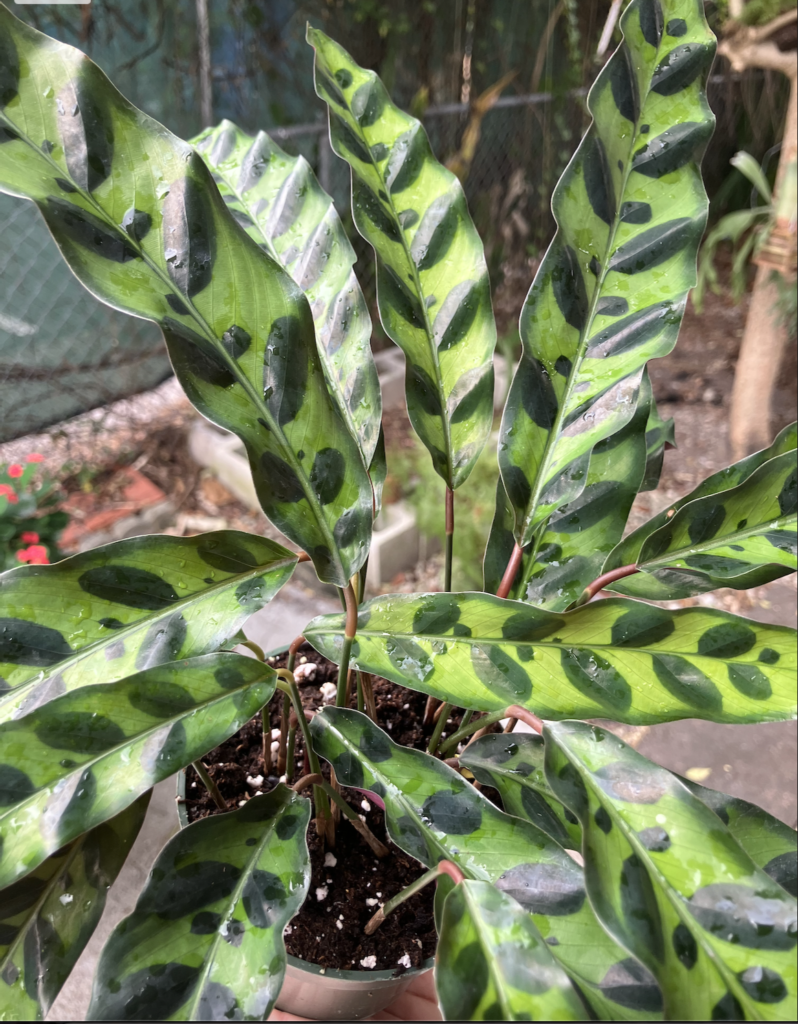
- This is a non toxic(for pets and humans) plant that likes to be misted and kept in low light with temps indoor around 65 – 85 deg F.
- Keep the soil evenly moist but never mushy/soaked with water. If you notice the leaves starting to brown on the tips and curl that can mean it’s not receiving enough water and humidity. Try using your bottle mister on a schedule along with the watering.
- Note: I’ve discovered that the plant seems to respond better to filtered water or distilled water. I noticed when using the tap water in Miami it gets brown curly dry spots which is the same response the plant gives if there is not enough humidity.
- A space that receives low indirect sunlight will make this plant very happy! I put mine on the floor in the living room which gets very bright south facing sunlight however the light doesn’t shine directly on the plant.
How to care for your Footed dwarf Elkhorn fern
Non toxic for pets and humans

- Although the Elk horn requires plenty of water, too much will be detrimental to the plant – since it naturally attaches itself to tree trunks, it’s used to regular water that quickly drains away. Watering once a week in the warmer months is usually enough, but ensure that the soil has dried out and the fronds look slightly wilted before each watering.
- Since the elkhorn fern also takes in water from the environment around it, humidity is important too. Misting the plant can be helpful, but only ever mist the new, green leaves – those dark, dry-looking leaves that have clustered around the bottom of your elkhorn fern are busy producing spores, and watering them will interfere with this.
- Elkhorn fern may have difficulty thriving, and will drop leaves, without ample sunlight. Place it less than 3 feet from a south-facing window to maximize the potential for growth.Select your region to see how the current weather in your area affects the placement of Elkhorn Fern in your home.
How to care for your Footed Kangaroo paw Fern
Non toxic for pets and humans
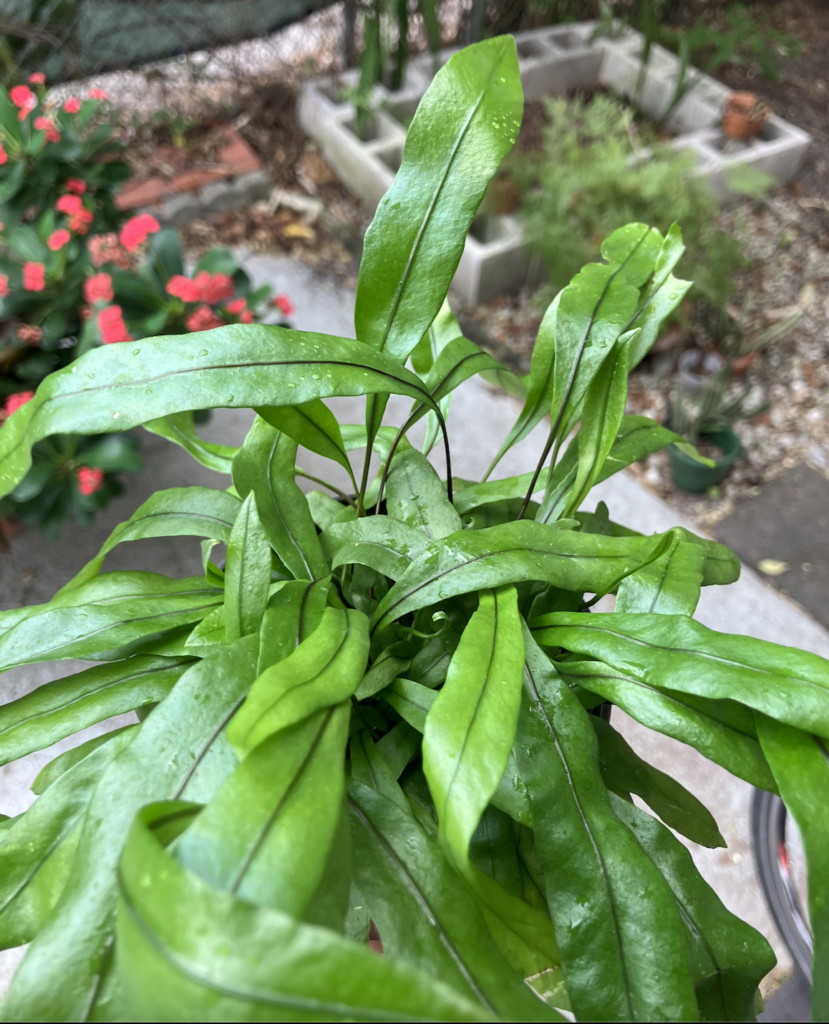
- Rainwater or distilled water will improve plant performance.
- Keep the soil moist but not overly wet and soggy. They enjoy a little drying out, but as soon as the surface has dried it’s fine to water it again.
- The leaves emerge from creeping thin dark green rhizomes, which have a slightly hairy texture. They look more like typical stems than the rhizomes you see on most ferns.
- If you want faster growth and plan to grow it to a large size over a few years, then you’ll need to increase the amount of light it gets. In my example I’d have to move it closer to the window, perhaps put it on a bedside table. I could also move it into a north facing window and put it right on the windowsill.
- Indirect sunlight only. It would be best if you avoided direct intense sunlight, think of where ferns typically grow (forest floors or attached to other plants, with a bit of dappled sunshine falling through the leaves).
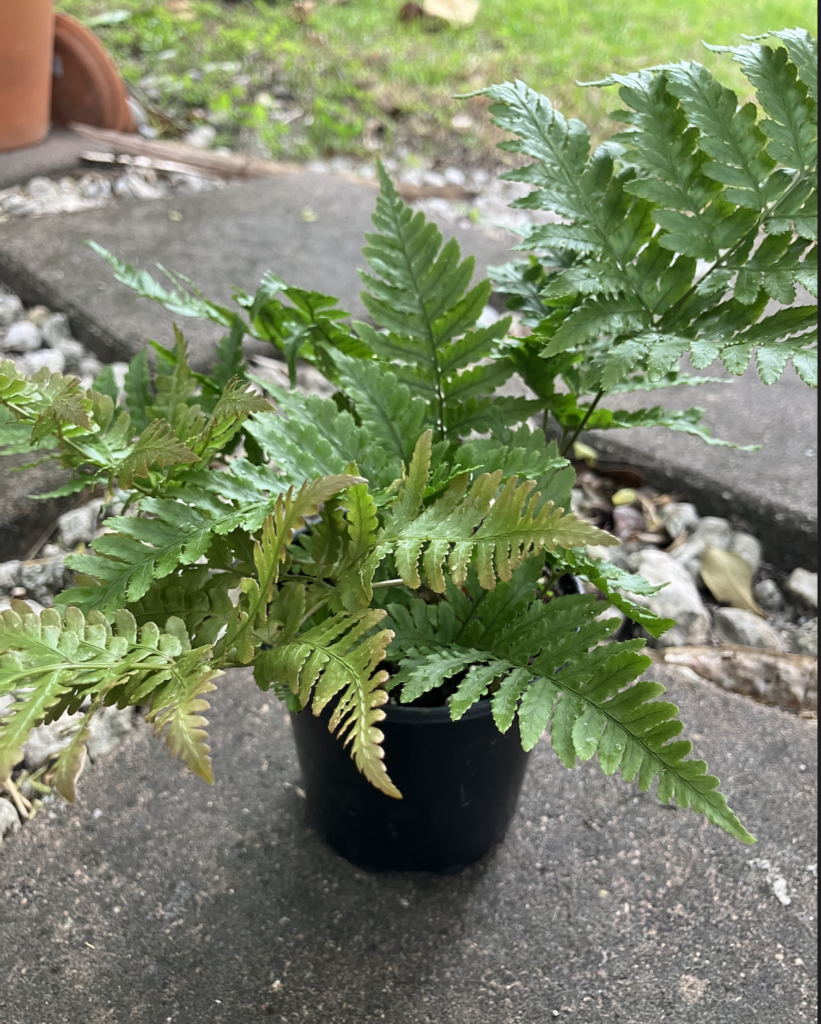
How care for your Autumn Fern
Non toxic for both pets and humans
- Thrives in medium to bright indirect light. Not suited for direct sunlight.
- Water every week, allowing soil to dry out halfway down between waterings. This plant will benefit from higher humidity.
- New fronds come up as a copper-red color and then mature to a deep green with age.
How to care for your Spotted angel wing begonia
- These plants can grow large and may develop slightly brittle stems along the way. Stake up larger plants to prevent damage to their canes as the foliage is highly attractive.
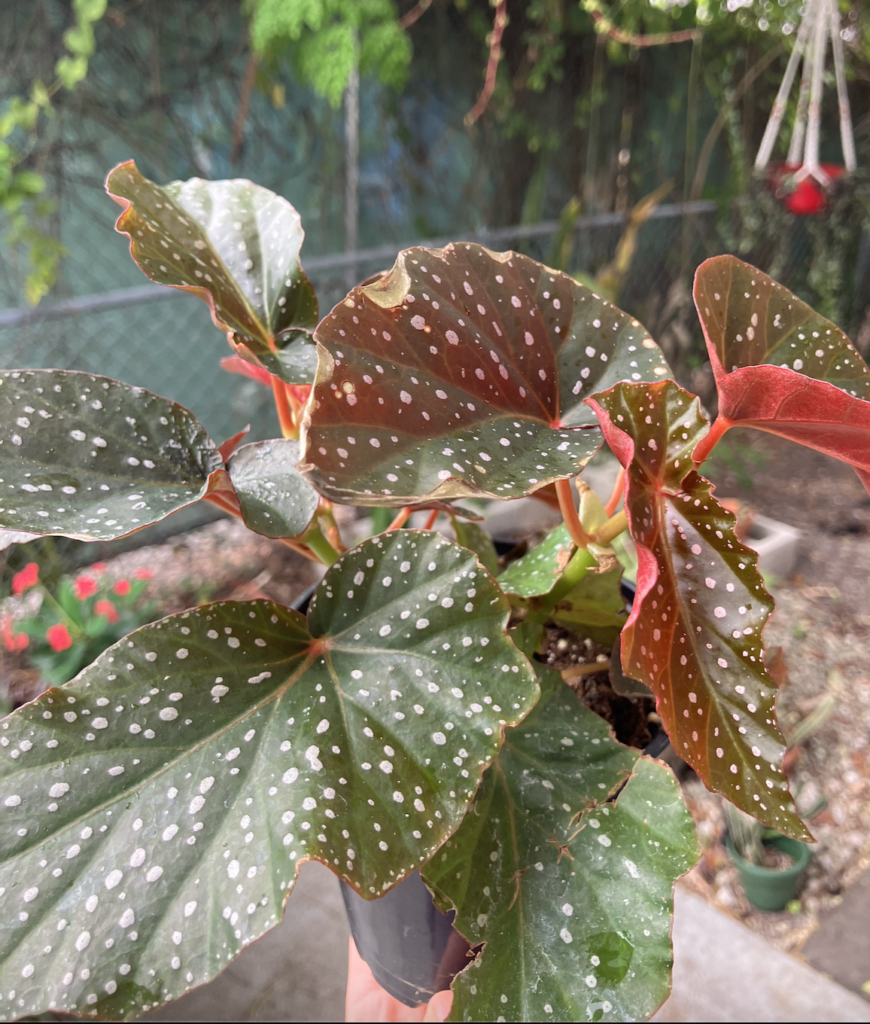
- Angel wing begonia plants like bright, indirect light year-round. If you don’t want your plant to flower, a partial shade location will allow it to grow without producing blooms.
- Angel wing begonias like to be kept consistently moist, and you can tell when they’re lacking in water if the edge of their leaves begin to brown. Once the soil has dried about an inch from the surface, saturate the plant throughly and allow it to drain.
How to care for your Starfish flower plant:
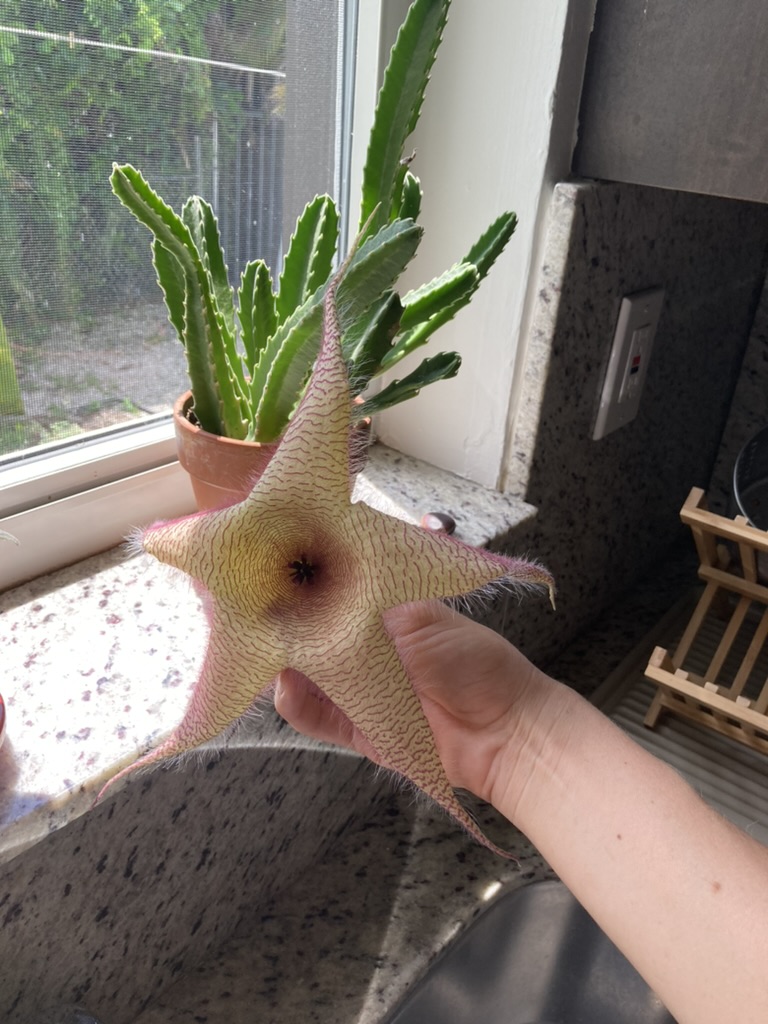
- The Starfish plant, also called Stapelia gigantea is a low maintenance plant with a beautiful out of this world flower. Always a show stopper and a conversation starter when in bloom 🙂
- When flowering it produces a unique large starfish shaped flowers that are up to 9 inches wide!
- Although this plant looks like a cactus, the starfish is not a true cactus but a succulent member of the milkweed family. It grows about 8 inches tall and spreads sideways by a series of succulent, coarsely toothed leafless stems. These thick, fleshy stems are fuzzy, ribbed and have a green coloration, with some variations in shades. It grows all year round. It tends to slow down growing when it is very hot.
- This is a low maintenance plant and a great plant for beginner gardeners. I have used this plant in my therapeutic horticulture activities for clients who have not had experience with house plants prior and it is always fun to watch these grow with very little care needed.
- Watering: It’s best to use the “soak and dry” method, and allow the soil to dry out completely between waterings. I add some pebbles to my soil and use cactus and succulent soil for potting (for drainage and to prevent rotting.) Mine have spread out of pots and onto the ground which to me means it is a pretty fast grower.
- Light: Carrion thrives in bright, indirect light. Place it near a window where it can receive bright, filtered sunlight for 4-6 hours a day. Avoid placing it in direct sunlight, as the intense rays can scorch the leaves and cause damage. If you notice that the stems are stretching or leaning toward the light source, it’s a sign that it needs more light.
How to care for your trailing watermelon vine:
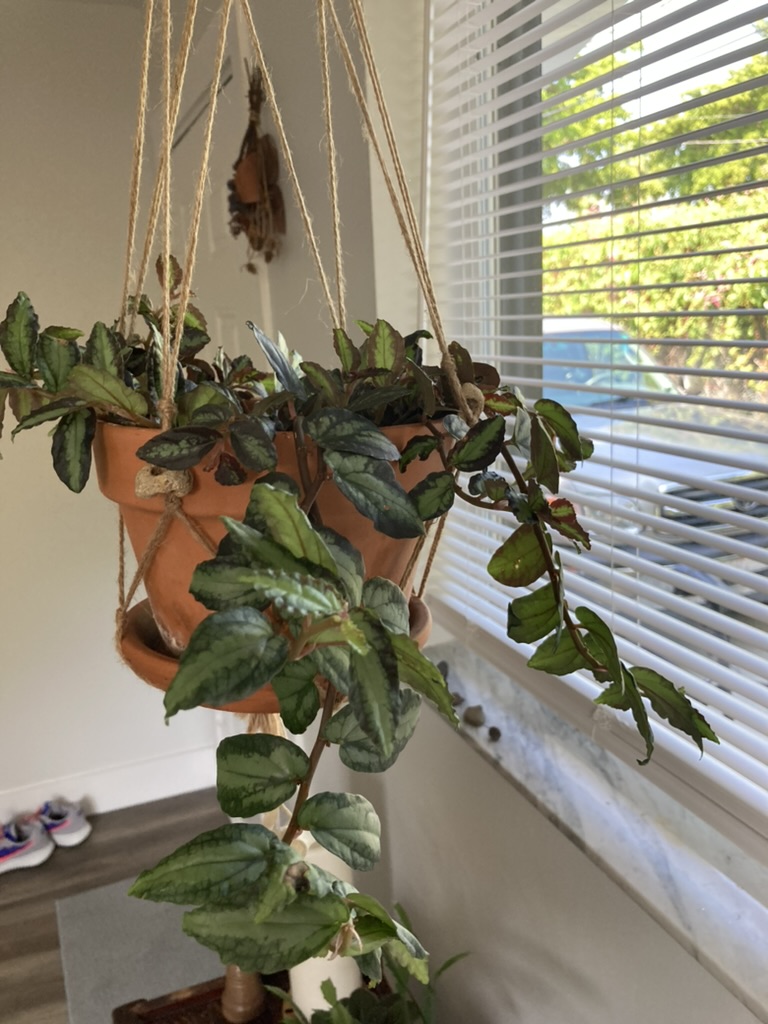
- Trailing watermelon vine, also called Pellionia repens is a beautiful fast growing plant that will trail out of pot. It makes a great houseplant hanging or on a windowsill, or outside in a shady area. Note: This is a tropical understory plant is used to weaving around the rainforest floor and does not live in harsh sunlight. The deep green colors of the plant hint at its ability to withstand lower light settings, but maximizing that indirect light brightness will help keep those colors rich and vibrant.
- Pellionia repens is pretty forgiving when it comes to lighting, but it’ll do best under bright, indirect light.
- I recommend avoiding direct sunlight.
- When planting the stem cutting, just place the stem of the plant into some moist soil and it will pretty quickly take with the right environment.
Watering:
- Keep Pellionia repens evenly moist at all times to keep it happy!
- The soil should be slightly damp to the touch but never completely saturated. This water-loving vine is still prone to root rot if it’s left sitting in a soggy substrate for too long.
- Growing in a pot, this is easily managed by simply using a pot with a drainage hole. Water thoroughly until the water comes out, then allow the top inch or so to dry before watering again.
How To Care For Your Aloe Vera:
- Aloes are some of the best indoor plants for beginners because they require little care. The most challenging part about caring for an aloe plant is often leaving it alone 🙂 You can order a small 4″, medium- 6-8″ or large size aloe 10-12″ These will be cut to order. I have been growing them in cinder block planters for over two years.
- Aloe vera has thick, fleshy, green leaves that are lance-shaped and have serrated edges with small, white teeth. The leaves grow in a rosette pattern, typically reaching a length of 12 to 19 inches (30 to 50 cm).
- Gel: Inside the leaves, there is a clear, jelly-like substance known as aloe gel, which is widely used for its healing and moisturizing properties.
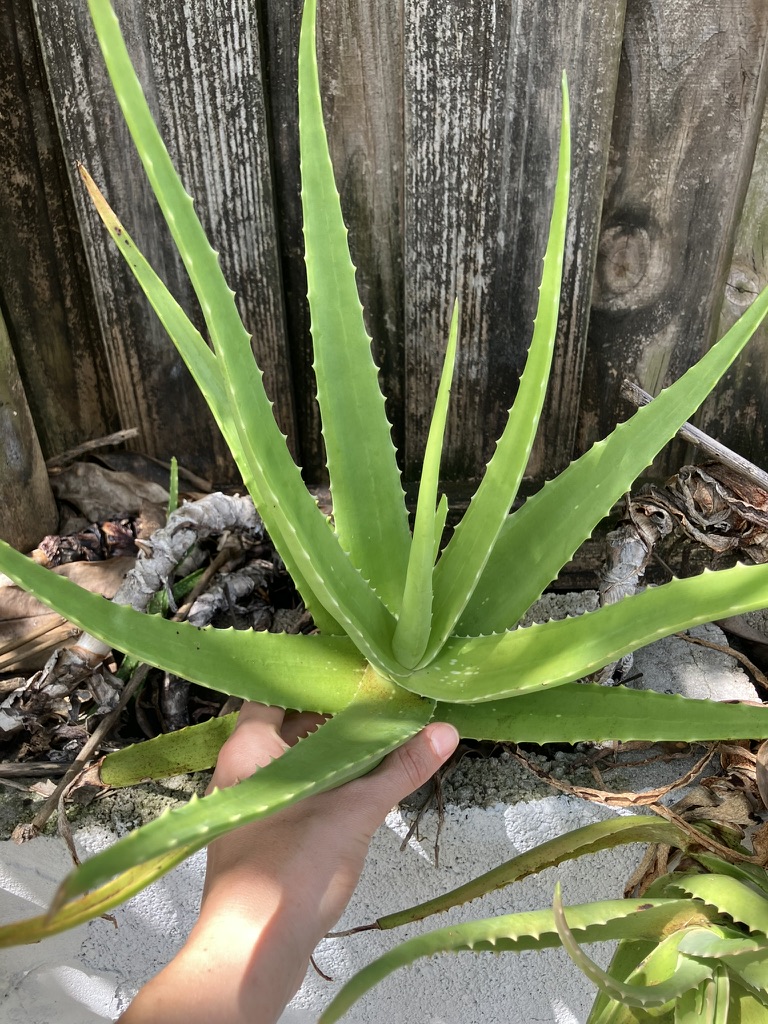
- Sunlight: Aloe vera thrives in bright, indirect sunlight but can tolerate partial shade. Direct sunlight for prolonged periods may cause the leaves to turn brown or red.
- Soil: It prefers well-draining soil, such as cactus or succulent mix, to prevent root rot. Adding sand or perlite can improve drainage.
- Watering: Aloe vera requires infrequent watering. Water the plant thoroughly but allow the soil to dry out completely between waterings. Overwatering can lead to root rot.
- Temperature: It grows best in temperatures between 55°F and 80°F (13°C to 27°C). Aloe vera is not frost-tolerant and should be kept indoors or in a warm environment during colder months.
- Propagation: Aloe vera can be easily propagated by removing and replanting the offsets, or “pups,” that grow at the base of the parent plant.